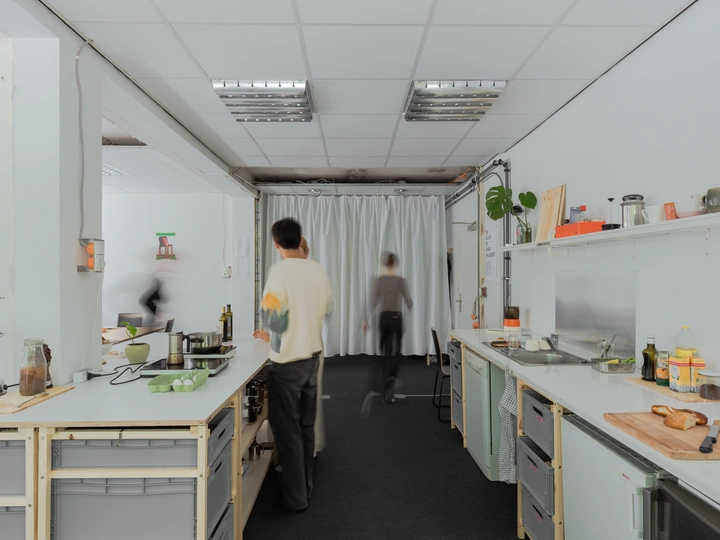Transforming vacant offices into temporary housing

Juli Sottorf
Emma Stiehle
We – Leona Erdmann, Juli Sottorf and Emma Stiehle - met during our architecture studies at HafenCity University Hamburg and soon realized that we were all looking for something beyond conventional design and aesthetics. What connects us is a shared curiosity for the social, political, and structural dimensions of architecture – and a desire to engage with spatial practice critically and collectively.
Out of this shared interest, we developed a bachelor thesis that combined theoretical research with spatial experimentation. It marked our first step toward an activist architectural practice: one that highlights inequalities and at the same time proposes tangible spatial alternatives. After graduating, we founded the collective vonwegenleer and began implementing our thesis in real life. Our pilotproject „Pop-Up Living“, turned a vacant office building into a temporary housing space. Through negotiation, collaboration, and DIY transformation, we created a living space while opening a broader conversation: How can we repurpose urban emptiness? Who gets to access space – and under what conditions? How can temporary use become a tool for long-term change?
Currently, we all work at the Chair of Architecture, Space and Society at HCU Hamburg with Prof. Dr. Sabine Hansmann, where we continue to explore how architectural research and teaching can be politically and socially engaged.
vonwegenleer positions itself between activism and institution, critique, and collaboration. We want to use architecture to make structures visible – but more importantly, to create space for new structures to emerge. Our practice is driven by care, curiosity, and the belief that spatial justice must be negotiated collectively.
About a year ago, we - Leona Erdmann, Juli Sottorf, and Emma Stiehle - founded the architecture collective vonwegenleer. What struck us in Hamburg was the contrast between a growing housing crisis and rising office vacancy. This became the basis for our Bachelor theses, where we explored the legal, political, and societal possibilities of temporary housing in vacant offices. We developed a three-step speculative design concept: “Squad Now!” – “Use Tomorrow?” – “Inhabit Soon.” These three interconnected scenarios outline a gradual approach to rethinking office vacancy for temporary living. Each addresses the full process - identifying stakeholders, proposing legal adjustments, and presenting spatial and architectural strategies through a detailed case study. We argue that temporary housing activates vacant space during in-between phases - before renovation, demolition, or sale - and offers a flexible and fast tool in tackling the housing crisis.
In summer 2025, we put our concept into practice: with federal funding, we realized a pilotproject for temporary housing in an empty office building in Hamburg’s city center. In collaboration with Prof. Dr. Sabine Hansmann (HafenCity University Hamburg) and 16 Master’s students in architecture, urban planning and urban design, we planned and intervened the temporary reuse of the space and lived there for four weeks - testing what it means to dwell in a non-residential setting. Since then, we have continued to share our findings through lectures, interviews, public panels, and social media—always guided by the question: Who owns the city, and who gets to live in it? We believe that temporary housing in vacant offices works - especially for certain user groups - and we invite others to join the conversation. At the same time, we demand legal and political action to create the conditions needed to scale this idea and make better use of underutilized urban space.